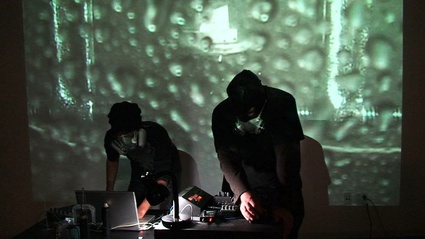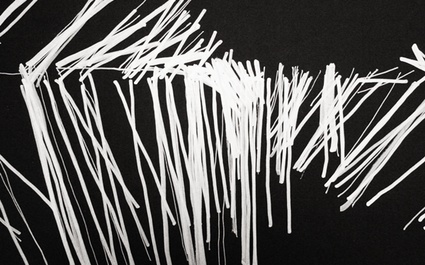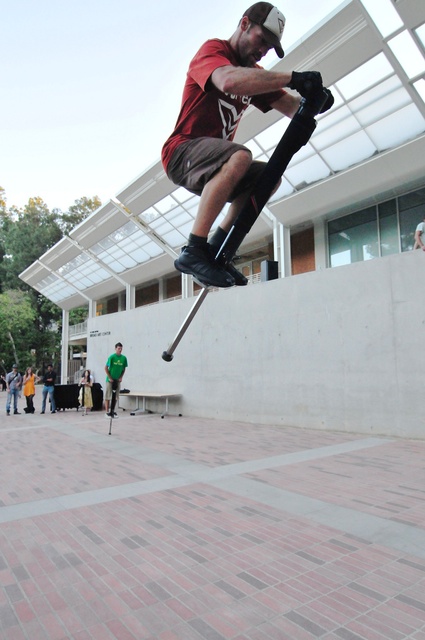In case you forgot that something like 5 months ago i posted the first part of this story, here’s a link to it: A visit to UCLA Department of Design | Media Arts, part 1.
The department is located inside the Eli and Edythe Broad Art Center on the UCLA campus, right next to T.E.U.C.L.A., Richard Serra‘s 42.5-ton ellipse sculpture. And that’s where you should go next week. On May 14, D|MA graduate students are showing some of their work at the MFA Exhibition.
I wrote about the projects of David Elliott, Michael Kontopoulos, Nova Jiang, and Justin Lui last time. Here’s a few words about two of the other students i met while i was in Los Angeles:
 Aerosol: a performance
Aerosol: a performance
Gil Kuno is doing mostly, but not only, sound-based projects. He recently collaborated with GX Jupitter-Larsen (The Haters) to develop an application and performance that amplify and treat the sound of an aerosol can to create a live soundscape. The image of the can discharging is projected behind the performers to deliver the audiovisual articulations of erosion and entropy. The performance ends when the can is empty.
A year ago, the artist exhibited the most frightening musical instrument i’ve ever seen:
Pogo-phonic, a pogo stick re-engineered to trigger sound samples while users are jumping around.
Christo Allegra‘s work intersects information design, dynamic media and performance. Among the works he showed me, the one i like the best is Phi Two, a series that uses an algorithm to construct a form based on phyllotaxis, the arrangement of the leaves on the stem of a plant. Phyllotaxis was described mathematically as morphogenesis by Alan Turing as part of his final work. Morphogenesis attempts to account for biological pattern formation as documented by phyllotaxis.
 In the Phi Two series, the application was rewritten for tracing the nodes of the phyllotaxis as they were generated. For each drawing, 200+ nodes/lines were traced in silver ink on black paper, and 100 drawings were generated. All of the resulting drawings were given away at their showing in return for an explanation from attendees as to why they had chosen the particular drawing. Marks generated in the drawing process were then fed back into the system for redraw.
In the Phi Two series, the application was rewritten for tracing the nodes of the phyllotaxis as they were generated. For each drawing, 200+ nodes/lines were traced in silver ink on black paper, and 100 drawings were generated. All of the resulting drawings were given away at their showing in return for an explanation from attendees as to why they had chosen the particular drawing. Marks generated in the drawing process were then fed back into the system for redraw.

